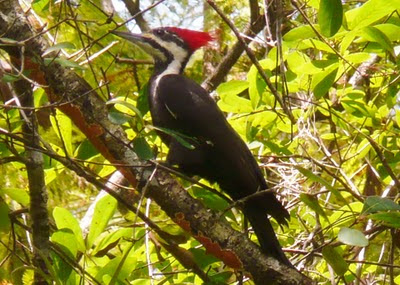Sunday, October 23rd
 |
| Sanibel Lighthouse |
Today we had the hawk watch at the Sanibel Lighthouse, sponsored by Audubon of SW Florida. It kicked-off at 8 am on a brisk, clear morning, with Vince McGrath as leader of our group of about fourteen birders.
Right off the bat, Gayle Schmidt reporting sighting a Scissor-tailed Flycatcher and as we moved up the path we come up with our FOS Yellow-rumped Warbler. But it wasn't a Myrtle race, it was a rare to south Florida Audubon's Warbler. So we started out with two western birds uncommon in Lee County. Then we found the recently reported male Pin-tailed Whydah. No doubt an escapee, but it did put on a good show.
 |
| Audubons Warbler, photo by Stan Damen |
 |
| Pin-tailed Whydah |
 |
| Scissor-taled Flycatcher |
Over the course of four hours we did not get big numbers of hawks, but did have a good variety - a couple of Kestrels, three Merlins, a pair of Sharp-shinned Hawks, a juvenile Red-tailed Hawk, two Northern Harriers, a Broad-winged Hawk and at least three Osprey.
As for our non-raptor finds we had Baltimore Oriole, Scarlet tanager, Blue-gray Gnatcatchers, Yellow-throated Vireo, White-eyed Vireo, Tennessee Warblers, Blue-throated Blue Warbler, lots of Palm Warblers, a Prairie warbler, a late Cerulean Warbler, American Redstarts, Bay-breasted Warblers, Indigo Bunting , a female Painted Bunting, several Chimney Swifts and a sole Northern Rough-winged Swallow.
 |
| American White Pelicans at Ding Darling |
Following the hawk watch, I headed over to Ding Darling National Wildlife Refuge for a quick drive trough. Was able to see a large number of American White Pelicans, Roseate Spoonbills, Snowy Egrets, Great Egrets, Willets, Short-billed Dowitchers, Pied-billed Grebes, a hand-full of Black-bellied Plovers, Least Sandpipers and Western Sandpipers. A good day to bird on Sanibel.











































